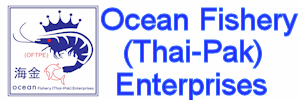The Netherlands Antilles (Dutch:
Nederlandse Antillen), previously known as the Netherlands West
Indies or Dutch Antilles/West Indies, is part of the Lesser Antilles
and consists of two groups of islands in the Caribbean Sea: Curaçao
and Bonaire, just off the Venezuelan coast, and St Eustatius, Saba
and St Maarten, located southeast of the Virgin Islands. The
islands form an autonomous part of the Kingdom of the Netherlands.
Coastal State
requirements for foreign fishing in Netherlands Antilles:
LEGISLATION
-No commercial fishing in the territorial waters and in the fishing
zone without a permit (sect. 2(1)) unless vessel is fishing with
maximum of 4 troll lines or hand-held lines. (Sect. 3(1) and (2))
-Regulations for fishing within territorial waters by vessels with
capacity of less than 6 GRT and less than 12 meters long are the
responsibility of island authorities; fishing by larger vessels and
in all cases outside territorial waters is regulated by Governor of
the Netherlands Antilles.
-Individual islands can decide whether to introduce a system of
permits for small-scale fishing in their territorial waters, either
for all fishing vessels or exclusively for foreign vessels. (Sect.
2(3))
-Permits shall be granted in response to a written application;
after hearing
Fisheries Commission, Minister may lay down general regulations
concerning information to be contained on application and submission
of application. (Sect. 7)
-Measures may be promulgated by Governor's Decree to regulate type
of fishing tackle, types and minimum sizes of fish which can be
caught or retained. (Sect. 3(1))
-Permit issued for 12 months. (Sect. 8)
-Permits may be issued and extended provided that continued survival
and natural development of fish stock will not be jeopardized.
(Sects. 6 and 8)
-In qualifying for a fishing permit, residents of the Netherlands
Antilles have priority over non-residents. (Sect. 6)
-Permit valid for maximum of 12 months. (Sect. 8)
-Permit non-transferable (sect. 11); provision made, however, for
use of another vessel which temporarily replaces vessel specified in
permit. (Sect. 9)
(Draft No. 2 of Fisheries Ordinance, 1991)
LEGISLATION
Permit holders may be required to report on fishing areas, fishing
effort, types of fish caught, and fishing methods used. (Sect. 3(3))
(Draft No. 2 of Fisheries Ordinance, 1991)

About Large
Pelagic Fishing in Curacao, Netherlands Antilles:
The fishing fleet
of Curacao has experienced a significant decline during the last
few years mainly because the import duties and the cost of fuel have
risen markedly. From a fleet of 435 vessels only 111 (25.5 percent)
are actively fishing; the others are idle due to mechanical and/or
financial problems, such as migration of owners. The fisheries is
predominantly artisanal, and although there is no clear distinction
between target species and bycatch, the large pelagic species with
the highest market value include: dolphinfish, wahoo,
and to a lesser extent, marlins and tunas. The
longline vessels predominantly target the large pelagic species such
as:
bigeye tuna, yellowfin tuna and
swordfish.
Dolphin fish (mahi mahi), jacks, sharks and
escolar are considered bycatch. The catch from these longline
vessels is predominantly exported.
Curacao had a break in its fisheries data collection. Since its
resumption (in 2000) data on catch and effort are being collected at
landing sites on a daily basis, using a sampling method. It was
realized that monitoring of the fisheries require at least 2 years
data to show trends; for example, previous data showed rainbow
runner contributing a constant 10 to 15 percent of the pelagic
landings, but it has not been significant in the recent data. Based
on this new data, it was concluded that there was a strong
correlation between boat length and catch per unit effort. The
government of Curacao intends to expand the number of longline
vessels, to take greater advantage of the large pelagic fish
resources in its fishery zone while being mindful of overfishing. It
is also expected that reliable fisheries data will function as a
basis for future Island Fishery Ordinance.
|
Some species of fish found in Netherlands
Antilles, Curacao, Bonaire, Dutch Caribbean:
Snappers,
groupers, jacks,
reef sharks,
rainbow runners, barracudas, bonefish, mahi mahi, ladyfish, gray
snapper, permit,
blue marlin,
white marlin, sailfish, Atlantic spearfish, wahoo, king fish,
yellowfin tuna, black fin tuna.
Common Name: Marlin
Local Name: balau
Common Name: Sailfish
Local Name: balau wairu or balau kora
Common Name: Red Snapper
Local Name: piska kora
Common Name: Yellowtail Snapper
Local Name: girstelchi piedra
Common Name: Bonefish
Local Name: Local Name: warashi
Common Name: Barracuda
Local Name: piku
Common Name: Dolphinfish (Mahi Mahi)
Local Name: dradu
Common Name: Jack
Local Name: yag
Common Name: Tuna
Local Name: buni
Common Name: bait fish
Local Name: aas
Curaçao Chamber of Commerce
- We represent the general
interests of the business community, keep a complete roster of
Curaçao businesses, and provide services to local and international
companies and individuals with an interest in doing business in,
from or through Curaçao.
|





